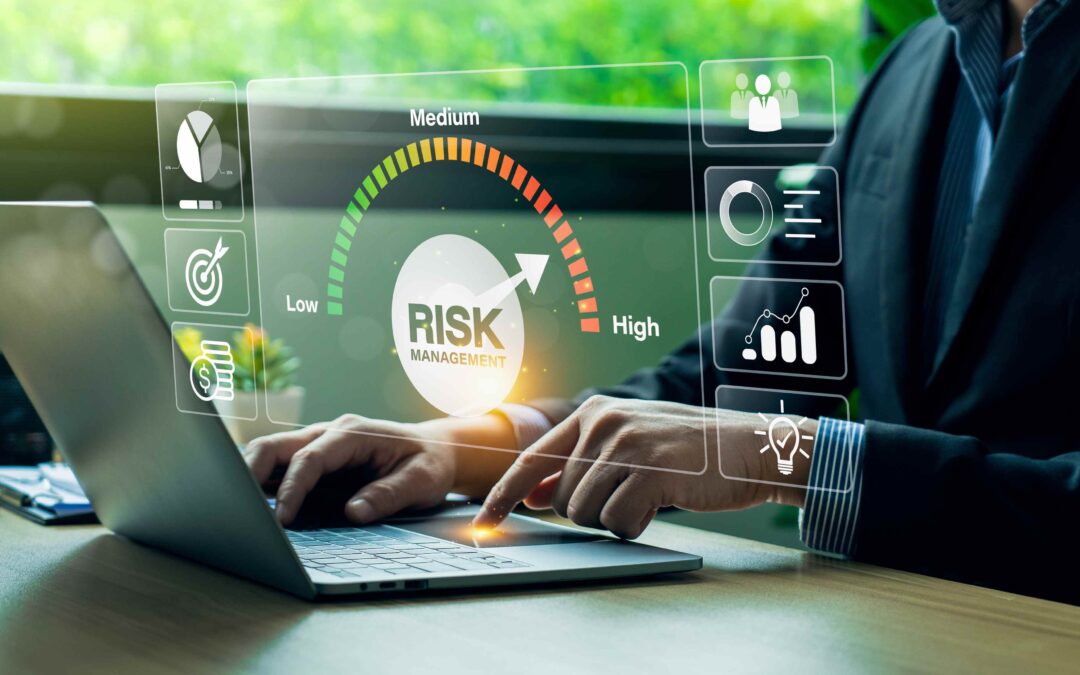Why the EPA’s 2025 Air Quality Report is a Wake-Up Call for Irish Businesses
What You Really Need to Know
Introduction
As we move through the latter half of 2025, a stark warning from Ireland’s Environmental Protection Agency (EPA) has brought a critical, often invisible, workplace issue into sharp focus. The agency’s latest findings on air quality are clear: we are not doing enough to protect clean air across our towns, villages, and cities. While we might associate significant air pollution with megacities abroad, the EPA’s data confirms it is a pressing domestic issue. Their report highlights that fine particulate matter (PM2.5), primarily from burning solid fuels, contributes to an estimated 1,300 premature deaths in Ireland each year.
For business owners, managers, and safety officers, this is far more than an environmental headline; it is a fundamental workplace health and safety concern. The air your employees breathe has a direct, measurable impact on their long-term health, daily wellbeing, and productivity. This report should act as a crucial prompt for every Irish business to re-evaluate their responsibilities under law and consider how a proactive approach to environmental and occupational health can become a competitive advantage.
This definitive guide will break down the key findings of the EPA’s report, explain your legal obligations as an employer in detail, and provide a clear framework for action, linking it directly to the powerful benefits of robust management systems like ISO 45001 and ISO 14001.
Understanding the Threat: What the EPA Report Really Means
The core message from the EPA is unambiguous. While Ireland’s air quality generally meets the current EU legal standards, it frequently fails to meet the more stringent, health-based guidelines set by the World Health Organisation (WHO). The main culprit identified is PM2.5, a cocktail of microscopic particles originating primarily from the domestic burning of solid fuels like coal, turf, and wood.
What is PM2.5 and why is it So Dangerous?
Particulate matter (PM2.5) refers to incredibly fine, inhalable particles with a diameter of just 2.5 micrometres or smaller. To put this into scale, it is approximately 30 times smaller than the width of a single human hair. Because of their microscopic size, these particles can easily bypass the body’s natural defences, penetrating deep into the lungs and even passing directly into the bloodstream.
The health implications are severe. According to health bodies like Ireland’s own HSE (Health Service Executive), long-term, cumulative exposure to these particles is scientifically linked to a range of serious health problems, including:
-
Cardiovascular diseases, such as heart attacks and strokes
-
Chronic respiratory illnesses, like COPD
-
The development of lung cancer
-
Adverse birth outcomes for exposed mothers
The EPA’s report, led by Director Dr. Micheál Lehane, makes the critical point that “the evidence from the health community is that there is no safe level of air pollution.” This is a vital concept for employers to grasp: even air quality that meets the current legal limits can still be damaging the health of your workforce.
A crucial takeaway from the report is that this is not an issue confined to major urban centres like Dublin or Cork. The EPA’s monitoring has shown that the highest levels of particulate pollution are frequently recorded in towns and villages across the country. You can monitor this in real-time using the official Air Quality Index for Ireland. This means that businesses operating anywhere in Ireland need to be acutely aware of the local air quality and its potential impact on their staff—particularly on employees with pre-existing health conditions.
Authoritative Link: You can read the full press release from the Environmental Protection Agency (EPA) on their website to understand the specifics of their findings.
The health implications are severe. According to heal
Washing chicken before cooking removes bacteria.
The practice of washing chicken before cooking is a common misconception. In reality, washing chicken can inadvertently spread harmful bacteria, such as Campylobacter, around the kitchen through water droplets. This process, known as cross-contamination, can lead to foodborne illnesses. The FSA of Ireland strongly advises against washing chicken. The most effective method to eliminate bacteria is by cooking the chicken thoroughly to the recommended temperature. This ensures any harmful bacteria present are destroyed, making the chicken safe to eat.
Cross-contamination only happens on cutting boards.
The risk of cross-contamination extends far beyond just cutting boards. It’s a widespread kitchen hazard that can occur on any surface where food is prepared, including utensils, countertops, and even on your hands. Bacteria from raw foods can easily transfer to these surfaces and then to other foods, leading to contamination. This underscores the importance of maintaining proper kitchen hygiene, such as regularly washing hands, cleaning surfaces thoroughly, and using separate utensils for different types of foods, particularly when handling raw meats and vegetables.
Leftovers are safe to eat until they start smelling off.
Leftovers may not always give off a telltale bad smell even when they’re no longer safe to eat. Bacteria like Salmonella and E. coli, which can cause foodborne illnesses, often don’t produce any noticeable odor. It’s vital to store leftovers properly by refrigerating them promptly and consuming them within a recommended period, usually within two days. When reheating, ensure they reach a temperature of at least 75°C to kill any harmful bacteria present. This practice is supported by the article on reheating leftovers provided by the Food Standard Agency, which emphasize the importance of temperature control in maintaining food safety.
Food poisoning is always immediate.
Directly refrigerating hot food can be risky as it may raise your fridge’s internal temperature, leading to a favorable environment for bacterial growth in other stored items. The advisable method is to let hot food cool down to room temperature before refrigerating. However, caution is needed to avoid leaving food out for too long at room temperature, where harmful bacteria can proliferate. The Food Standards Agency (FSA) offers guidance on managing food temperatures, emphasizing the importance of maintaining both the cold chain for refrigerated foods and the hot chain for heated foods, especially in a business context.
You can tell if a food is thoroughly cooked by its color.
Relying on the color of food as an indicator of doneness can be misleading and potentially unsafe. For example, meats can brown before reaching a temperature that is safe enough to kill harmful bacteria. Poultry may turn white but still not be cooked to a safe temperature, and hamburger meat might brown before any harmful bacteria are eliminated. On the other hand, some foods, like vegetables or certain cuts of meat, might retain a vibrant or pinkish hue even when fully cooked. Similarly, some foods may appear undercooked when they are actually safe to eat. The most reliable method to determine if food has been cooked to a safe internal temperature is to use a food thermometer. This tool provides an accurate measurement, ensuring that food has reached the necessary temperature to kill off any harmful bacteria and is safe for consumption.
Raw cookie dough is safe to eat because it doesn’t contain meat.
Relying on the color of food as an indicator of doneness can be misleading and potentially unsafe. For example, meats can brown before reaching a temperature that is safe enough to kill harmful bacteria. Poultry may turn white but still not be cooked to a safe temperature, and hamburger meat might brown before any harmful bacteria are eliminated. On the other hand, some foods, like vegetables or certain cuts of meat, might retain a vibrant or pinkish hue even when fully cooked. Similarly, some foods may appear undercooked when they are actually safe to eat. The most reliable method to determine if food has been cooked to a safe internal temperature is to use a food thermometer. This tool provides an accurate measurement, ensuring that food has reached the necessary temperature to kill off any harmful bacteria and is safe for consumption.
Raw cookie dough is safe to eat because it doesn’t contain meat.
The misconception that microwaving food automatically ensures the elimination of all bacteria can lead to unsafe food practices. The process of microwaving often results in uneven heating, creating areas within the food that do not get hot enough to kill bacteria. These “cold spots” are potential zones where harmful bacteria can survive. To ensure thorough heating in a microwave, it is important to follow specific cooking times, regularly stir or rotate the food for even heat distribution, and use a food thermometer to confirm that the food has reached a safe internal temperature. This approach is crucial for maintaining food safety when using a microwave. The Food Standards Agency provides detailed guidelines on safe microwave cooking, which are essential for anyone looking to use this appliance effectively and safely.
About AcornStar HACCP Training Courses
I hope you found our myth-busting insights helpful! If you’re eager to dive deeper into food safety and gain accredited expertise, we’ve got just the thing for you. Our range of interactive online courses, including Allergen Awareness, HACCP Levels 1, 2, and 3, are designed to the highest standards. Trusted by some of the biggest brands and semi-state institutions in the country, these courses offer a comprehensive understanding of crucial topics like Manual Handling, Slips, Trips, and Falls, Fire Safety Awareness, and Fire Warden Training. Elevate your food safety knowledge with us today – because when it comes to food safety, we’re all in this together

The High Cost of Gravity Why HSENI is Targeting Falls in Construction and Farming
The High Cost of Gravity Why HSENI is Targeting Falls in Construction and Farming What You Really Need to Know In the high-risk industries of construction and agriculture, the most persistent and deadly hazard remains the oldest one: gravity. Despite stringent...

Safety First What the New EU Toy Safety Regulation Means for UK and Irish Businesses
Safety First What the New EU Toy Safety Regulation Means for UK and Irish Businesses What You Really Need to Know Introduction On 13 October 2025, the Council of the EU approved its position on a new Toy Safety Regulation that will replace Directive 2009/48/EC. The...

What the ISO 9001 and ISO 14001 Revisions Mean
The Future of HSEQ What the ISO 9001 and ISO 14001 Revisions Mean for UK and Irish Businesses What You Really Need to Know Introduction In the realm of Health, Safety, Environment, and Quality (HSEQ), standing still is never an option. The global standards that...

The AI Revolution in HSEQ What the EU’s “AI Factories” Mean for UK and Irish Businesses
The AI Revolution in HSEQ What the EU’s AI Factories Mean for UK and Irish Businesses What You Really Need to Know Introduction Artificial Intelligence (AI) is rapidly moving from a buzzword to an essential operational tool. A recent announcement from the European...

All-Island Alert Safety Authorities Launch Campaign Targeting Deadly Falls
All-Island Alert Safety Authorities Launch Campaign Targeting Deadly Falls What You Really Need to Know Introduction In a major cross-border initiative, the Health and Safety Authority (HSA) in Ireland and the Health and Safety Executive for Northern Ireland (HSENI)...

The Trojan Horse on Wheels Why a UK Scooter Recall is a Major Safety Warning for Irish Businesses
The Trojan Horse on Wheels. Why a UK Scooter Recall is a Major Irish Safety Warning What You Really Need to Know Lessons from a Critical Electrical Safety Failure In the world of workplace safety, the most serious threats often arrive in the most unassuming packages....

A Shock to the System Why the Anker Recall is an Urgent Electrical Safety Warning for Every Irish Business
Fire Hazard Anker Power Bank Recall is a Workplace Wake Up Call What You Really Need to Know The Shocking Truth About Power Bank Hazards In the world of tech accessories, few names are as recognised and trusted as Anker. That is why the recent major recall of their...

Ireland’s New Emergency Network Is Your Lone Worker Safety Plan Still Fit for Purpose?
National Safety Boost Irish Government Launches New Emergency System What You Really Need to Know Enhancing Emergency Services Response Across Ireland In a major step forward for national safety, the Irish Government has announced the launch of a new, state-of-the-art...

The Human Cost of Tech Is Your Irish Workplace Ready for the EU’s Digital Safety Focus?
What EU-OSHA's Seminar Means for Human Factors in Digital Workplaces. What You Really Need to Know Introduction On October 10th, 2025, Europe’s top safety experts will gather for a crucial online seminar hosted by the European Agency for Safety and Health at...

Beyond the Award Are You a ‘Leading Light’ in Driving for Work Safety?
Why the EPA’s 2025 Air Quality Report is a Wake-Up Call for Irish Businesses What You Really Need to Know Introduction Every year, the Road Safety Authority (RSA) shines a spotlight on the individuals, communities, and organisations making a real difference on our...





